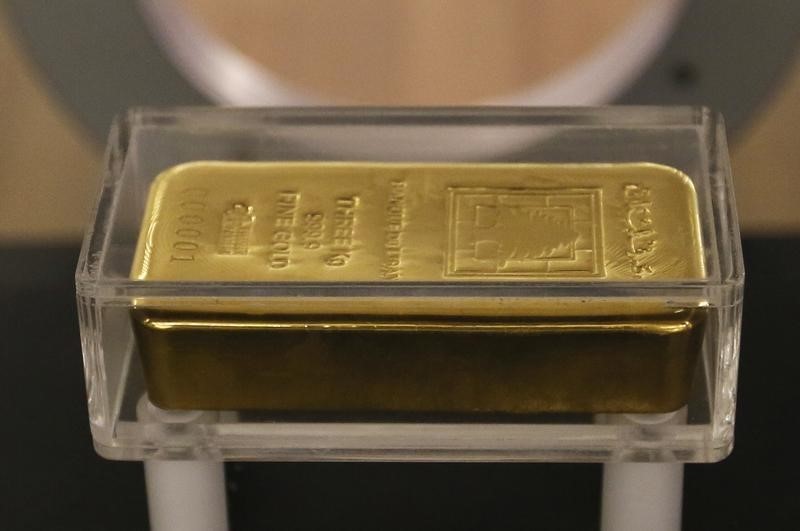By Geoffrey Smith
Investing.com -- Gold prices drifted lower on Monday as a modest degree of risk appetite returned to global markets, while data released late on Friday suggested that the recent rally runs the risk of getting over-extended.
By 11 AM ET (1600 GMT), gold futures for delivery on the Comex exchange were down 0.6% at $1,578.95 a troy ounce, while spot gold was down 1.0% at $1,574.63 an ounce.
Silver futures were down 2.0% at $17.65 an ounce, while platinum futures were up 1.0% at $971.90. Copper futures were on course to break a 13-day losing streak, rising 0.5% to $2.53 a pound.
Data released by the Commodity Futures Trading Commission on Friday had shown the level of speculative net long positions rose to its highest on record by the middle of last week, as traders sought hedges against the coronavirus outbreak in China. The outbreak continues to spread, with over two-thirds of China’s factories staying shut beyond the scheduled end of the Lunar New Year holidays, and flight movements at Chinese airports down by more than 50% from last year.
Analysts have quickly come to a consensus that there will be a sharp drop not just in Chinese, but in global economic activity in the first quarter, but whether central banks will cut interest rates in response, or prefer to "look through" what is likely to be a temporary cooling of activity, is far from clear.
Either way, gold has now reached levels that are undermining final demand from both retail investors and jewelers. According to World Gold Council data, demand from jewelers fell by 133 tons last year, while bar and coin demand fell by 223 million tons. Together, that more than outweighed increased demand from exchange-traded funds. Analysts at JPMorgan (NYSE:JPM) see gold prices drifting down to $1,450 by the end of the year.
Data released on Monday suggested that the world’s factories had regained momentum in January, with the Institute of Supply Management’s manufacturing survey index rising to its highest since August and the Markit eurozone manufacturing purchasing managers index rising to its highest since March – albeit still staying below the 50 line that signifies growth.
Elsewhere, comments by European Central Bank chief economist Philip Lane to the Financial Times also appeared to lean slightly away from further monetary easing by Frankfurt.
Lane said the bank should give a greater weighting in its consumer inflation basket to housing costs, a factor that analysts estimate would push the CPI close to 2% and weaken the arguments for further accommodation.
Lane, who had been more notable for his justifications of aggressive easing while Mario Draghi was still president, also talked up the likelihood of higher wage growth and tariffs feeding their way into higher inflation.
